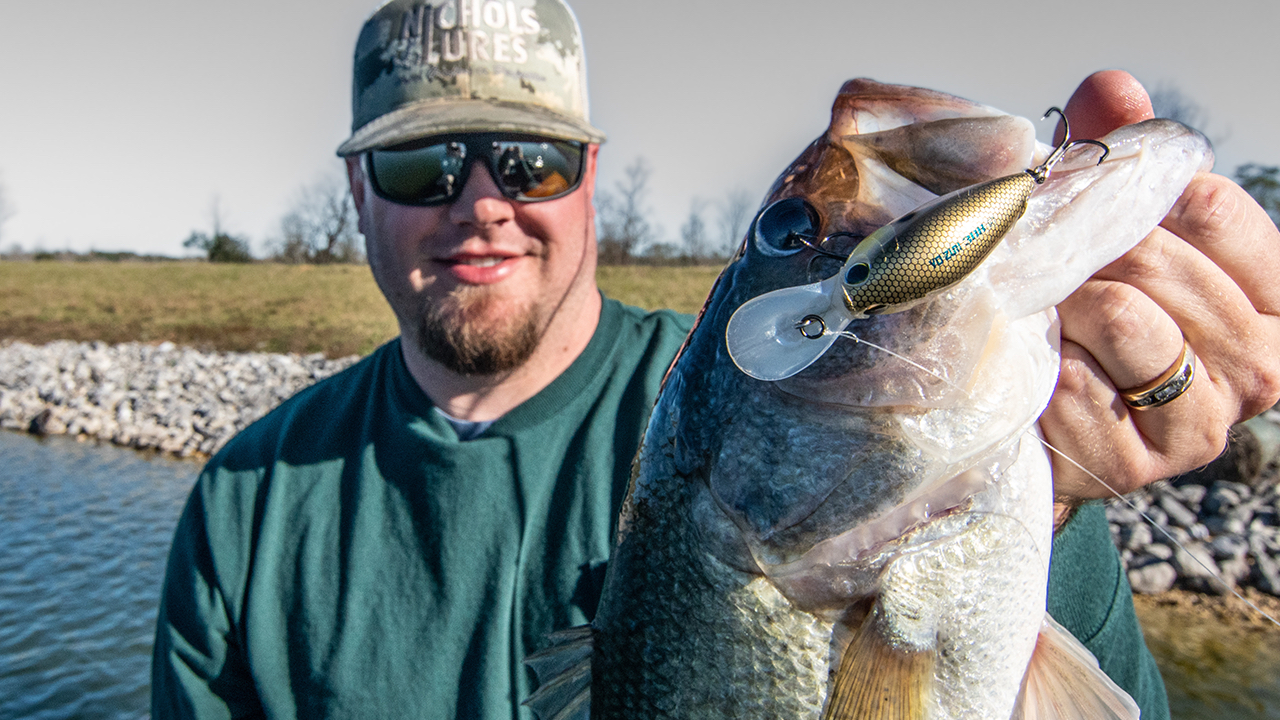Alabama native Braxton Setzer explains why riprap is one of the best habitat types for bass throughout the cold-water period (fall, winter, and spring) and how to dissect riprap with mid-depth crankbaits to find fish and trigger bites.
Riprap absorbs heat, thus warming the water around it. The warmer water draws in baitfish and bass, but expanses of riprap can be challenging to dissect. Mid-depth crankbaits (6- to 8-feet) are among the best tools for maintaining bottom contact with riprap and generating reaction strikes. Understanding what’s on the bottom and associating it to bites helps you find productive stretches in less time.
TACKLE USED
- BAIT – Yo-Zuri 3DB Series 1.5 MR Crankbait, color – Gizzard Shad
- ROD – Phenix Ultra MBX Casting Rod, 7′ MH
- REEL – Lew’s Tournament MP LFS Casting Reel, 6.8:1
- LINE – Yo-Zuri T-7 Premium Fluorocarbon, 10- to 12-pound
- SUNGLASSES – Costa Del Mar Blackfin Pro
Slow down and downsize — mantras to live by in the late fall and winter. Setzer prefers starting his day with a moderate retrieve speed, which in his opinion is best achieved with slow to mid-speed reels. Concerning size, small baitfish are more prevalent in winter, so crankbaits with small to mid-sized bodies get the nod.
Lastly, Setzer explains why he prefers cranking with a medium-heavy power rod with a fast taper over the more typical medium power stick with a moderate taper. Per usual, a quality 10- to 12-pound fluorocarbon main line provides the right blend of depth control and strength.












